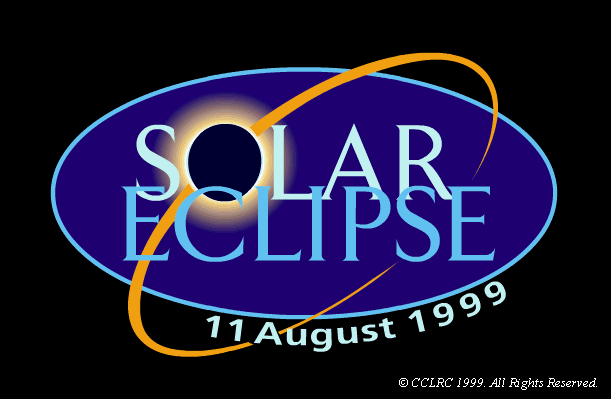
Atmospheric Measurement techniques.

Advances in ionospheric and atmospheric measurement techniques will
allow a detailed analysis of the effect of the '99 eclipse.
- Global Atmospheric
modelling has been used to study the effect of an eclipse on the
upper atmosphere. This enables us to make testable predictions about the
effect of the eclipse on our upper atmosphere.
-
Ionospheric Tomography will be used to
study the effect of the eclipse on the distribution of ionisation.
According to modelling work, it should be possible to see waves
generated by the eclipse in these scans.
- Fabry Perot
Interferometers and related instruments will be able to measure the
effect of the eclipse on both the temperature and movement of the atmosphere.
- Vertical
sounding of the ionosphere. Ionosondes
will be deployed to study changes in the ionosphere. Modern ionosondes
can not only measure the electron density, but can also obtain
information about the spatial distribution of irregularities. This
enables the instrument to detect waves as they propagate through the
atmosphere, altering the shape of the ionosphere as it does so.
- Oblique sounding uses similar technology
to vertical sounding, but spaces the transmitter and receiver apart by
anything from ten to several hundred kilometers. Oblique propagation has
direct implications to radio communications.
- The
Solar Heliospheric Observatory, SOHO , will be in a
position to make in-situ measurements of the active regions on the solar disk
and lower atmosphere of the sun. We propose to use this information in
conjunction with ionospheric measurements to carry out a detailed
analysis of ionospheric loss rate during an
eclipse.
- The meteor radar bounces radio signals off the
trails of meteors as they burn up in the atmosphere. These trails are blown
about by the winds and so by measuring the speed with which these trails
move, it is possible to infer the wind speed.
Atmospheric Science |
Radio Experiment |
What you can do |
Ionosondes
31/07/98 Chris Davis

![]()